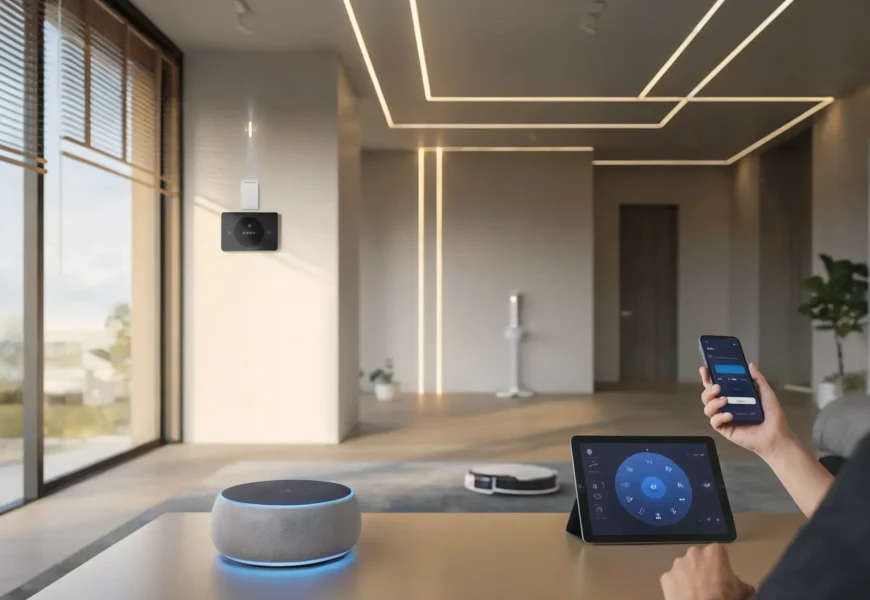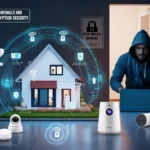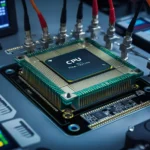Imagine walking into a home that knows your preferences better than you do! That’s the power of IoT in smart homes. In 2024, the Internet of Things (IoT) is revolutionizing the way we live, making our homes more comfortable and efficient than ever before. Did you know that by 2025, there will be over 75 billion IoT devices worldwide? That’s nearly 10 devices for every person on Earth! In this article, we’ll explore how IoT is transforming our living spaces and why you might want to jump on this tech-savvy bandwagon. Get ready to dive into the world of connected devices that are making our homes smarter, cozier, and more energy-efficient!
What is IoT and How Does it Work in Smart Homes?
Before we delve into the exciting world of smart home devices, let’s take a moment to understand what IoT really means and how it functions in our homes.IoT, or the Internet of Things, refers to the vast network of physical devices, vehicles, home appliances, and other items embedded with electronics, software, sensors, and network connectivity, which enables these objects to collect and exchange data. In the context of smart homes, IoT is the technology that allows various devices and systems within your house to communicate with each other and with you, creating a seamless, interconnected living environment.But how does this magic happen? Let’s break it down:
- Sensors and Devices: Smart home IoT systems start with a variety of sensors and devices placed throughout your home. These can include everything from temperature sensors and motion detectors to smart appliances and voice-activated assistants.
- Connectivity: These devices are connected to your home’s internet network, usually through Wi-Fi, Bluetooth, or specialized protocols like Zigbee or Z-Wave.
- Data Collection: The sensors continuously collect data about your home environment, energy usage, and your habits and preferences.
- Central Hub: Many smart home systems use a central hub or controller that acts as the brain of the operation. This hub receives data from all the connected devices.
- Cloud Processing: The collected data is often sent to the cloud for processing and analysis. This is where the real magic happens – powerful algorithms analyze the data to identify patterns and make decisions.
- Automation and Control: Based on the processed data, your smart home system can automatically adjust settings, trigger actions, or send you notifications. You can also control devices manually through smartphone apps or voice commands.
- Machine Learning: Over time, many IoT systems use artificial intelligence and machine learning to better understand your preferences and habits, allowing for more accurate predictions and personalized automation.
The role of AI and machine learning in smart home IoT cannot be overstated. These technologies enable your home to learn from your behaviors and adapt to your lifestyle. For example, your smart thermostat doesn’t just follow a set schedule – it learns when you’re usually home, your temperature preferences at different times of day, and even takes into account the weather forecast to optimize your home’s climate control.Now that we understand the basics, let’s explore the exciting world of IoT devices that are transforming our homes in 2024!
Top 10 IoT Devices Enhancing Home Comfort in 2024
- Smart Thermostats for Optimal Temperature Control
Gone are the days of returning to a stuffy house or waking up in the middle of the night to adjust the temperature. Smart thermostats like the Nest Learning Thermostat or the Ecobee SmartThermostat have revolutionized home climate control. These devices learn your schedule and preferences, automatically adjusting the temperature for optimal comfort and energy efficiency. They can be controlled remotely via smartphone apps and even integrate with voice assistants for hands-free operation.
- Intelligent Lighting Systems for Ambiance and Energy Savings
Smart lighting has come a long way since its inception. In 2024, systems like Philips Hue and LIFX offer not just remote control and scheduling, but also color-changing capabilities, scene setting, and even circadian rhythm support. Imagine your lights gradually brightening in the morning to wake you naturally, or automatically adjusting their color temperature throughout the day to match the natural light outside. These systems not only enhance comfort but can significantly reduce energy consumption by ensuring lights are only on when needed.
- Voice-Activated Virtual Assistants for Hands-Free Control
Amazon’s Alexa, Google Assistant, and Apple’s Siri have become ubiquitous in smart homes. These AI-powered assistants act as the central control point for many IoT devices. With a simple voice command, you can adjust your thermostat, turn on lights, play music, or even order groceries. The latest models offer more natural conversations, better voice recognition, and increased privacy features.
- Smart Security Cameras and Doorbells for Peace of Mind
Devices like the Ring Video Doorbell and Arlo Pro 4 have transformed home security. These smart cameras offer HD video, two-way audio communication, motion detection, and even facial recognition. They allow you to monitor your home from anywhere, receive instant alerts on your smartphone, and even interact with visitors or potential intruders remotely. Some advanced systems integrate with smart locks, allowing you to grant access to trusted individuals even when you’re not home.
- Connected Appliances for Streamlined Household Chores
From refrigerators that can create shopping lists to washing machines that optimize water and detergent use, smart appliances are making household chores easier and more efficient. LG’s InstaView refrigerators, for example, can send you notifications when food is about to expire, suggest recipes based on its contents, and even order groceries automatically. Samsung’s smart washers and dryers can be controlled remotely, notify you when a cycle is complete, and even troubleshoot issues without a service call.
- Smart Beds and Sleep Trackers for Better Rest
Quality sleep is crucial for our overall well-being, and IoT devices are here to help. Smart beds like the Sleep Number 360 can adjust firmness, warmth, and position to ensure optimal comfort throughout the night. They work in tandem with sleep trackers like the Withings Sleep Analyzer, which monitors your sleep cycles, heart rate, and even detects snoring. These devices provide detailed sleep reports and can integrate with other smart home devices to create the perfect sleep environment.
- Air Quality Monitors and Purifiers for a Healthier Environment
With increasing concerns about indoor air quality, devices like the Awair Element and Dyson Pure Cool are becoming essential in smart homes. These smart air purifiers not only clean the air but also monitor various pollutants, humidity, and CO2 levels. They can automatically adjust their settings based on the air quality and even integrate with your HVAC system for whole-home air management.
- Smart Speakers for Immersive Audio Experiences
While often doubling as virtual assistants, smart speakers like the Sonos One or Apple HomePod mini offer incredible audio quality and smart features. They can create multi-room audio systems, adjust their sound based on room acoustics, and even act as intercoms. Some models also serve as smart home hubs, controlling other IoT devices in your home.
- Automated Window Treatments for Privacy and Light Control
Smart blinds and shades, such as those from Lutron or Somfy, add both convenience and energy efficiency to your home. These can be programmed to open and close at specific times, respond to sunlight levels, or be controlled remotely. By automatically adjusting to the sun’s position, they can help regulate your home’s temperature and protect your furniture from sun damage.
- Smart Mirrors for Personalized Health and Beauty Routines
Rounding out our list are smart mirrors, which are transforming personal care routines. Devices like the HiMirror Slide analyze your skin condition, track your skincare routine’s effectiveness, and even provide personalized beauty advice. Some models integrate with fitness trackers to display health data, or with smart scales to help you track fitness goals.
Boosting Home Efficiency with IoT Technology
While comfort is a key benefit of smart home technology, efficiency is equally important. IoT devices are helping homeowners save energy, conserve water, and reduce waste. Here’s how:
Energy Management Systems and Real-time Consumption Monitoring
Smart energy monitors like the Sense Energy Monitor or Emporia Vue can track your home’s energy usage in real-time. These devices can break down consumption by appliance, helping you identify energy hogs and optimize your usage. Some can even predict your monthly bill or alert you to unusual energy spikes.
Smart Irrigation Systems for Water Conservation
In an era of increasing water scarcity, smart irrigation systems are a game-changer. Devices like the Rachio 3 use weather data, soil moisture sensors, and plant-specific information to optimize watering schedules. These systems can reduce water waste by up to 50% while keeping your garden lush and healthy.
Automated HVAC Optimization Based on Occupancy and Weather
Modern smart HVAC systems go beyond simple scheduling. They use occupancy sensors, weather forecasts, and even GPS data from your smartphone to optimize heating and cooling. For example, the system might start cooling your home when it detects you’re on your way back from work on a hot day.
Intelligent Power Strips and Outlets to Reduce Phantom Energy Usage
Did you know that many devices consume power even when they’re turned off? Smart power strips and outlets, like the TP-Link Kasa, can completely cut power to devices when they’re not in use, eliminating this “phantom” energy drain. Some can even monitor energy usage and be controlled remotely or via voice commands.
Smart Meters for Accurate Utility Billing and Usage Insights
Many utility companies are now offering smart meters that provide detailed, real-time information about your energy and water usage. These meters can help you understand your consumption patterns and even participate in demand response programs, where you can save money by reducing usage during peak times.
The Benefits of Implementing IoT in Your Smart Home
The advantages of integrating IoT devices into your home go far beyond just having cool gadgets. Let’s explore some of the key benefits:Increased Energy Efficiency and Lower Utility BillsOne of the most tangible benefits of smart home technology is reduced energy consumption. From smart thermostats that optimize heating and cooling to intelligent lighting systems that ensure lights are only on when needed, IoT devices can significantly cut your energy usage. Many users report savings of 10-30% on their utility bills after implementing smart home technology.
Enhanced Home Security and Remote Monitoring Capabilities
IoT-enabled security systems provide peace of mind like never before. With smart cameras, doorbells, and locks, you can monitor your home from anywhere in the world. Receive instant alerts if there’s unusual activity, and even interact with visitors remotely. Some systems can also integrate with smoke detectors and water leak sensors for comprehensive home protection.
Improved Comfort Through Personalized Automation
Imagine your home adjusting to your needs without you having to lift a finger. Your lights dim and your favorite playlist starts when you sit down to dinner. The temperature adjusts automatically when you go to bed or wake up. Your coffee starts brewing when your alarm goes off. This level of personalized comfort is the reality with a well-integrated IoT smart home system.
Time-saving Features for Daily Tasks and Routines
Smart home devices can take care of many routine tasks, freeing up your time for more important things. Robotic vacuum cleaners can keep your floors clean, smart irrigation systems can water your plants, and connected appliances can notify you when maintenance is needed or supplies are running low.
Potential Increase in Property Value
As smart home technology becomes more mainstream, homes equipped with these systems are becoming more attractive to buyers. A well-implemented smart home system can be a significant selling point, potentially increasing your property’s value.
Overcoming Challenges in IoT Smart Home Integration
While the benefits of IoT in smart homes are numerous, it’s important to address some of the challenges that come with this technology:
Addressing Privacy and Security Concerns
With devices constantly collecting data about our homes and habits, privacy is a major concern. It’s crucial to choose devices from reputable manufacturers, regularly update firmware, use strong passwords, and understand what data is being collected and how it’s being used. Many companies now offer local processing options that keep your data within your home network.
Ensuring Compatibility Between Different Devices and Platforms
One of the biggest frustrations in setting up a smart home can be getting devices from different manufacturers to work together. Standards like Matter, backed by major tech companies, are aiming to solve this problem by creating a unified protocol for smart home devices. In the meantime, hub devices that support multiple protocols can help bridge the gap.
Managing the Learning Curve for New Technologies
For those who aren’t tech-savvy, the prospect of setting up and managing a smart home can be daunting. Many manufacturers are working to make their devices more user-friendly, with simplified setup processes and intuitive interfaces. Additionally, there are now professional smart home installation and management services available for those who prefer a hands-off approach.
Dealing with Potential Connectivity Issues
A smart home is only as reliable as its internet connection. Ensuring a strong, stable Wi-Fi network throughout your home is crucial. Mesh Wi-Fi systems can help eliminate dead spots, and some smart home devices now offer offline functionality to continue basic operations even if the internet goes down.
Balancing Automation with Personal Control
While automation is convenient, it’s important to ensure that you still have control over your home environment. The best smart home systems offer easy ways to override automated settings and provide multiple control options (app, voice, physical switches) to suit different preferences.
Future Trends in IoT for Smart Homes
As technology continues to evolve, the future of IoT in smart homes looks incredibly exciting. Here are some trends to watch:
AI-Powered Predictive Maintenance for Home Systems
Imagine your HVAC system detecting a potential issue and scheduling a maintenance visit before you even notice a problem. AI algorithms will increasingly be used to analyze data from various home systems, predicting failures and optimizing maintenance schedules.
Integration of Augmented Reality (AR) for Home Management
AR could transform how we interact with our homes. Imagine pointing your smartphone at an appliance to see its energy usage, or using AR glasses to see virtual controls for your smart home devices overlaid in your field of vision.
Expansion of Edge Computing for Faster Device Responses
To reduce latency and improve privacy, more processing will be done on the devices themselves or on local hubs, rather than in the cloud. This “edge computing” approach will make smart home devices faster and more reliable.
Development of More Sustainable and Eco-Friendly IoT Devices
As environmental concerns grow, we’ll see a focus on creating IoT devices with smaller carbon footprints. This includes using recycled materials, improving energy efficiency, and designing for longevity and repairability.
Increased Focus on Wellness and Health Monitoring Features
Smart homes will play a larger role in our health and wellness. From air quality management to sleep optimization, and even early detection of health issues through daily monitoring, our homes will become proactive partners in maintaining our well-being.
As we’ve seen, IoT in smart homes is not just about fancy gadgets – it’s about creating living spaces that are more comfortable, efficient, and tailored to our needs. From energy savings to enhanced security, the benefits of integrating IoT into our homes are clear. As technology continues to evolve, we can expect even more innovative solutions that will make our lives easier and our homes smarter.
The journey to a fully connected smart home doesn’t have to happen overnight. Start small with a few key devices that address your most pressing needs or interests. Maybe it’s a smart thermostat to help manage your energy bills, or a video doorbell for added security. As you become more comfortable with the technology, you can gradually expand your smart home ecosystem.
Remember, the goal of a smart home is to enhance your life, not complicate it. Choose devices and systems that truly add value to your daily routine and align with your lifestyle. With thoughtful implementation, your smart home can become a personalized haven of comfort and efficiency.
Ready to take the plunge into the world of IoT-powered smart homes? The future of home living is here – and it’s smarter than ever! Whether you’re looking to save on energy bills, enhance your home’s security, or simply enjoy the convenience of automated routines, there’s a smart home solution waiting for you. Embrace the technology, and watch as your home transforms into a responsive, efficient, and comfortable living space that truly understands and anticipates your needs.














